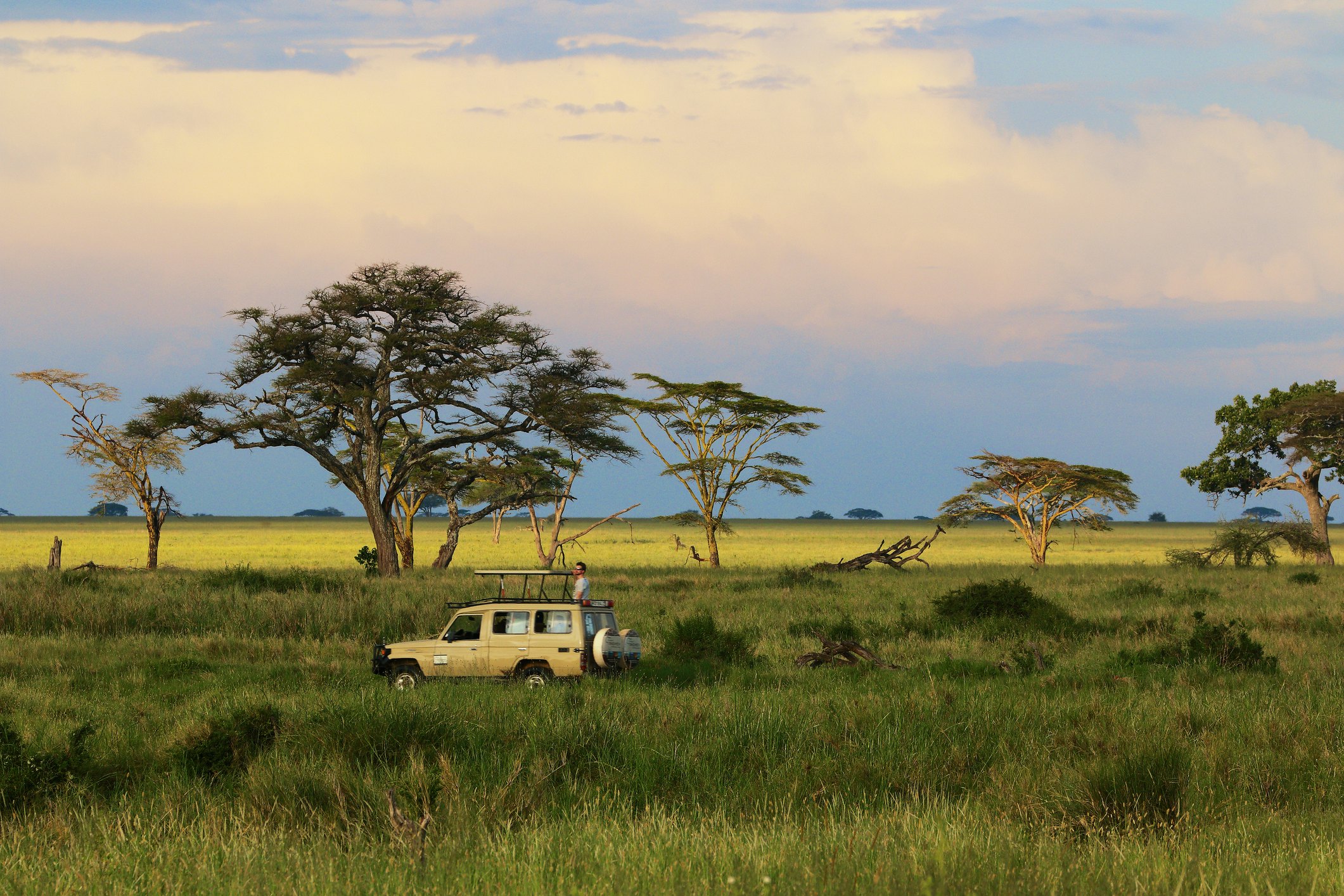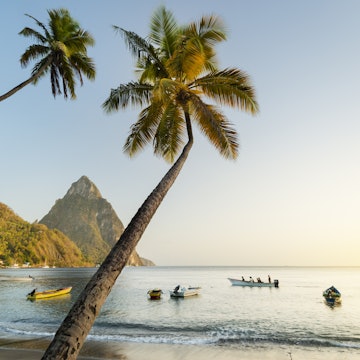

These money-saving tips can help you make the most out of your travels in Tanzania © Anastasiia Shavshyna / Getty Images
Tanzania’s world-class wildlife watching doesn’t come cheap.
By the time you’ve budgeted for getting to wildlife areas, sleeping at remote bush lodges and paying national park fees, the totals can quickly mount up. Add a trek up Mt Kilimanjaro or a week on Zanzibar and prices will climb even higher.
Yet, if you’re flexible with your plans and don’t mind roughing things a bit, travel in Tanzania can be surprisingly reasonable. Transportation and accommodation are two areas where it’s possible to significantly cut costs, by taking trains or buses rather than flying, and staying in hostels or simple guesthouses instead of upmarket lodges. Dining local style is another cost-saver, and even wildlife safaris can be surprisingly affordable if you visit lesser-known national parks, travel in the low season and sleep at campsites rather than lodges.
Here’s a guide to daily costs in Tanzania, along with some tips and tricks to help you save.

Daily costs in Tanzania
Dorm bed in a hostel: US$10–20
Basic room for two: US$30–65
Double room at an upmarket hotel: US$200+
Wildlife safari per person per day, including meals, transport and wildlife drives: US$150–800+
Bus fare from Dar es Salaam to Arusha: US$15–25
Short taxi ride: from US$5
Meal at a local-style restaurant: US$3–5
Restaurant dinner for two: US$15–25
Bottle of Kilimanjaro beer: US$2
Average daily cost: US$50–300+
1. Be flexible with your timing
Many things, including international flights and certain park fees, will be cheaper during the low (rainy) season from March to May. Lodges in some areas close, and hiking routes and getting around away from the tarmac can be muddy and wet. However, landscapes are lush and green countrywide, birding is wonderful and crowds are non-existent. Prices, especially for accommodations, also tend to be lower during the shoulder season months from November to early December, in February and from late May to early June.
2. Camp or stay in budget hotels
You can save significantly on accommodation costs by camping or sleeping in hostels and budget hotels, at least for part of your trip. If you camp as part of a safari or trek, most operators rent out equipment inexpensively so you don’t need to carry your own. Especially on the mainland, hostels and local-style hotels are generally simple, clean and comfortable, and many offer a range of dorm beds and private rooms.

3. Dine local style
It’s no hardship to dine local style in Tanzania, enjoying the country’s abundant local fruits and vegetables, freshly caught seafood on the coast and filling meals of rice and beans or ugali (cornmeal porridge) and sauce, all for just a few dollars or less. If you eat all your meals local style, it’s easy to keep food costs under US$10 per day.
4. Take the local buses, trains and ferries
Bus travel offers significant savings over domestic flights or vehicle hire (unless you're in a group), and it's a good way to get introduced to local life. To smooth your travels, book several days in advance on popular routes to get a good seat, depart as early in the day as possible and pay a few extra dollars for "luxury" service.
Train travel is also a real bargain, although very slow. One of the country’s two main lines is currently being upgraded, but the other, Tazara, runs regularly between Dar es Salaam and New Kapiri Mposhi in Zambia, and offers a slice of local life as it slowly makes its way through a corner of Nyerere National Park and on into the scenic Southern Highlands. For travel between the mainland and Zanzibar, ferries run several times each day and are cheaper than flights.

5. Creatively plan your safari
By visiting smaller or lesser-known parks, camping outside park boundaries, visiting during low season and joining up with a group if you’re traveling solo, it’s possible to significantly whittle down per-day safari costs. For example, entry fees at Ruaha National Park – which offers excellent wildlife watching – are only US$30 per person per day, compared with US$70 per day for Serengeti National Park. Location is also key when choosing accommodations. It’s always cheaper to stay outside park boundaries, and camps and lodges near smaller or less-visited parks will generally be less expensive than those around the major northern circuit destinations.
Joining a group will enable you to split transport costs for both getting to and getting around inside the parks and can result in major savings. Four to five people is generally an ideal size: check the seating configuration of the vehicle and keep in mind whether someone will get stuck in a middle seat without good views of the animals.
6. Skip the safari and head south
Tanzania’s northern safari circuit, which includes Serengeti park and Ngorongoro Crater, is the most-visited region of the country, and prices for everything around the parks are generally higher than in the seldom-visited south. To really keep costs down and have an amazing Tanzanian cultural experience, consider exploring the southeastern coast, taking in Kilwa, Lindi and Mikindani, or the southwest, from Iringa down towards Mbeya and Lake Nyasa. The far west, around Tabora, Kigoma and Kipili, on Lake Tanganyika, will also be significantly cheaper and offers a wonderful introduction to Tanzanian life and culture. For beach vacations, sticking to the mainland coast will often be less expensive than Zanzibar, and you’ll have all those beautiful beaches mostly to yourself, without Zanzibar’s crowds.
7. Hike rather than trek
Summiting Kilimanjaro is an amazing experience, but exploring the mountain’s lower slopes is equally fascinating. Rather than a trek to the top, for which you’ll need to pay close to US$2000 or more, consider a day hike on Kilimanjaro’s lower slopes, visiting a coffee plantation and getting to know the local Chagga people. Other alternatives include trekking on Mt Meru (in Arusha National Park) and village-to-village hiking in northeastern Tanzania’s Usambara range.
8. Use ride-sharing apps to get around
Dalla-dallas (shared minivans) and boda-boda (motorcycle taxis) are the cheapest ways of getting around, with fares under US$1, although accidents are common, especially with boda-boda. A safer alternative is to use one of the ride-sharing apps that operate in larger cities and towns. Fares for private taxis are also reasonable, starting from around US$5 or less for a short ride; get the name of a reliable driver from your hotel.
















